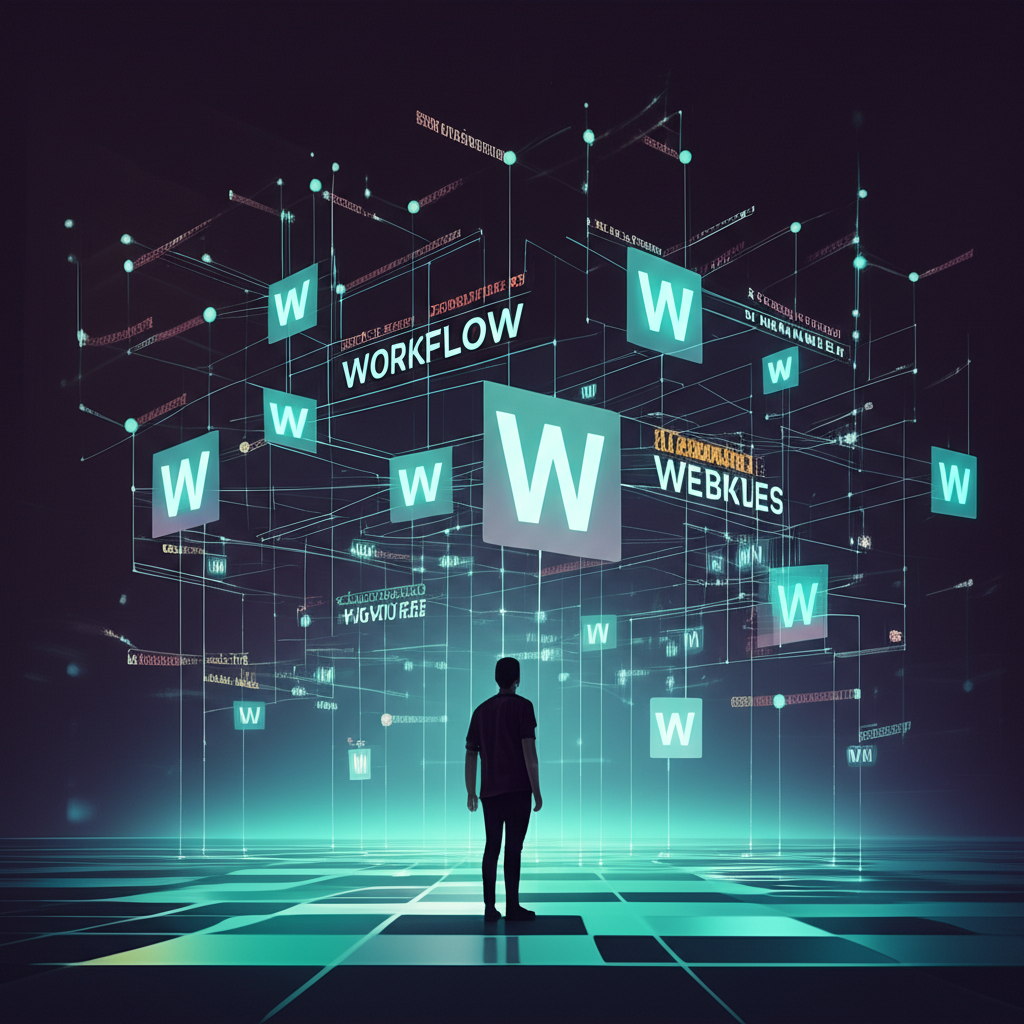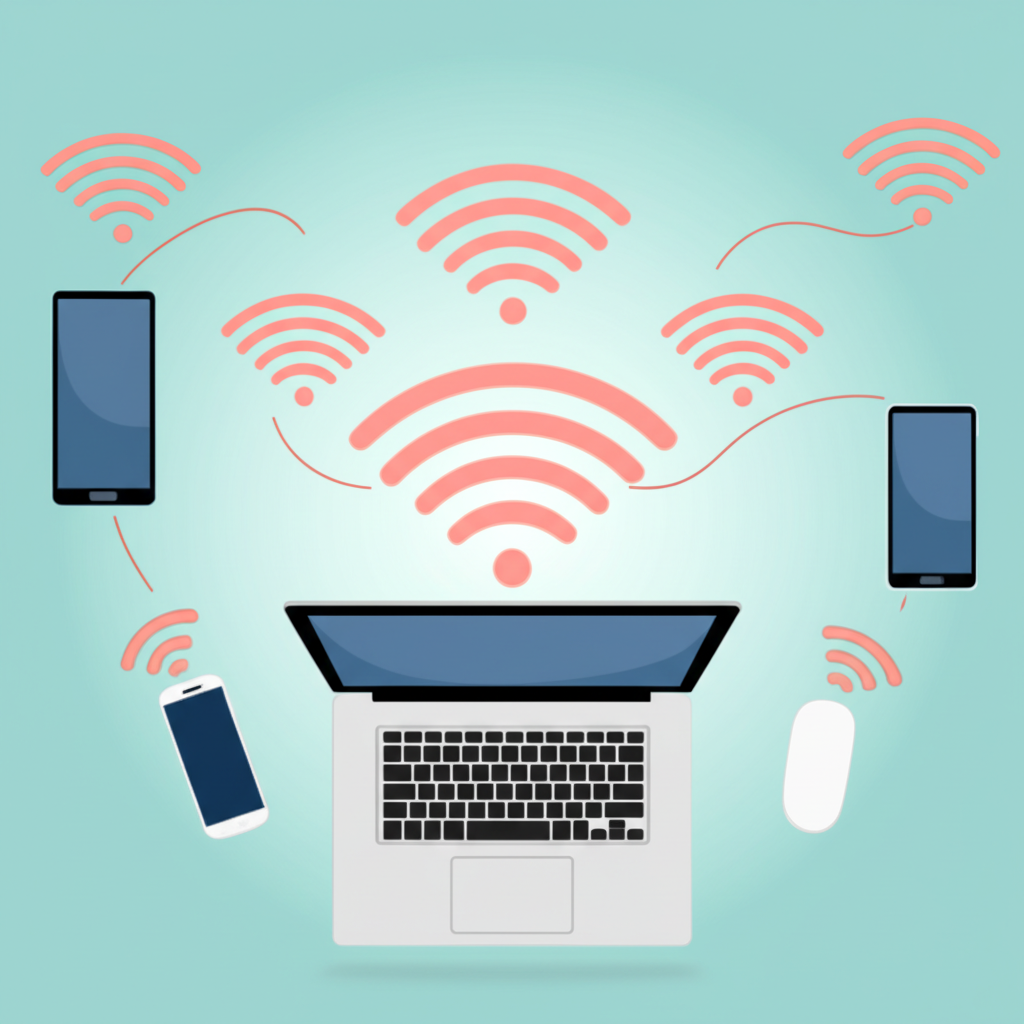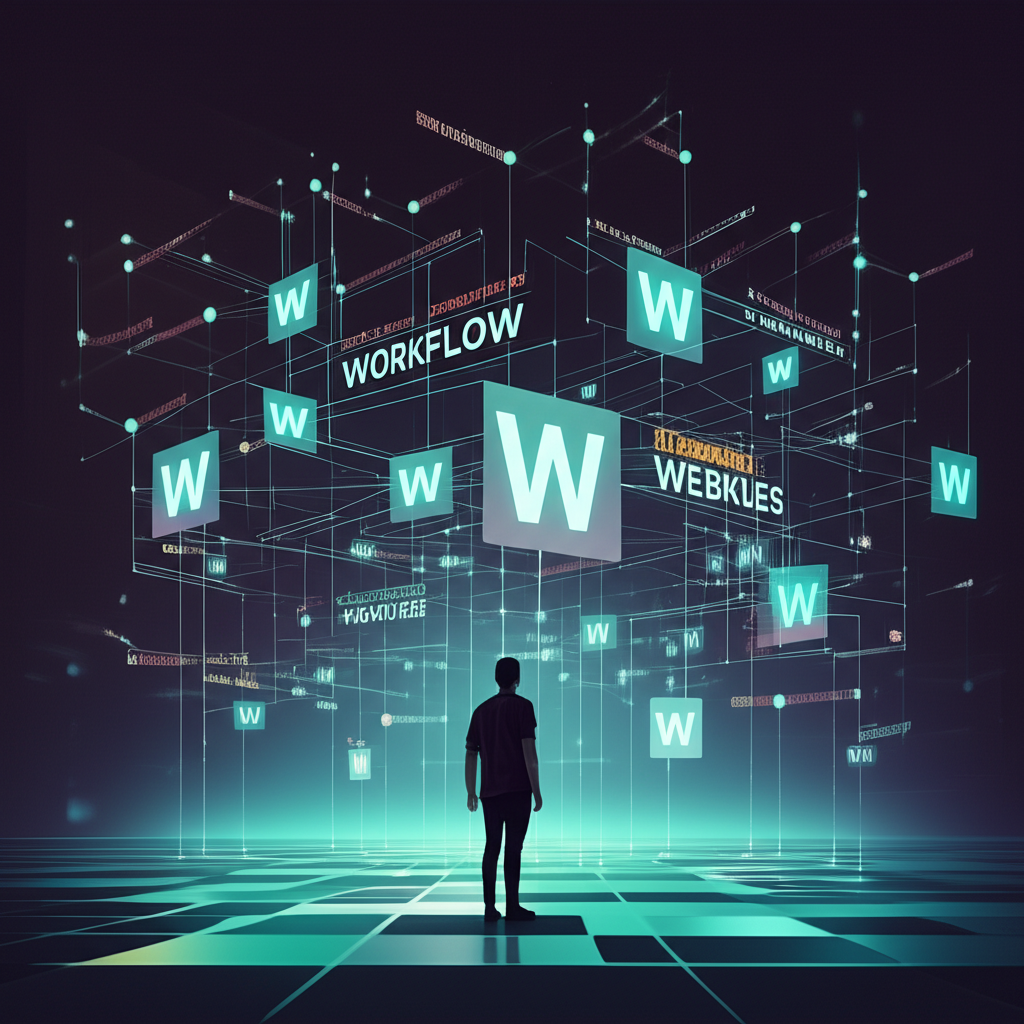Introduction: Navigating the World of ‘W’ Tech Terms

As our lives become increasingly intertwined with digital systems, fluency in technology terminology is no longer reserved for engineers or IT specialists—it’s a practical skill for everyone. From managing smart home devices to recognizing online threats, the ability to understand and use tech language confidently shapes how we interact with the modern world. This guide dives into essential technology terms that begin with the letter ‘W’, breaking down both foundational concepts and more advanced jargon. Whether you’re building your first website, securing your network, or simply trying to keep up with tech news, this resource will help you grasp key ideas clearly and accurately. We’ll explore everything from everyday tools like Wi-Fi and word processors to emerging innovations like wearables and webhooks—offering context, clarity, and real-world relevance.
Essential ‘W’ Technology Terms: The Core Vocabulary

At the heart of today’s digital infrastructure are several ‘W’-starting technologies that power our daily interactions with devices and data. These core terms represent the foundational layer of modern computing and connectivity—understanding them is the first step toward mastering digital literacy.
Wi-Fi
Wi-Fi has become synonymous with wireless internet access, enabling seamless connections between devices and networks without relying on physical cables. Based on the IEEE 802.11 family of standards, Wi-Fi transmits data via radio waves, allowing laptops, smartphones, tablets, and smart home gadgets to share information and reach the internet through a wireless router. Found in homes, cafes, offices, and public spaces, Wi-Fi networks vary in speed and range depending on the generation (such as Wi-Fi 5, Wi-Fi 6, or the latest Wi-Fi 7). Its convenience and scalability have made it a cornerstone of personal and enterprise networking.
Web (World Wide Web)
The World Wide Web—commonly shortened to “the Web”—is a vast system of interlinked documents and resources accessible via the internet. Each page is identified by a unique URL and connected through hyperlinks, creating a navigable network of information. While often confused with the internet itself, the Web is actually one of many services that run on top of the global internet infrastructure. It was invented by Tim Berners-Lee in 1989 and has since evolved from static HTML pages into dynamic, interactive platforms powered by scripting languages, databases, and cloud computing.
Windows (Operating System)
Developed by Microsoft, Windows is the most widely used operating system for personal computers worldwide. First launched in 1985, it introduced a graphical user interface to mainstream audiences, replacing command-line inputs with windows, icons, and menus. Over the decades, Windows has evolved through numerous versions—from Windows 95 and XP to Windows 10 and 11—each enhancing performance, security, and compatibility. It supports a massive ecosystem of software and hardware, making it a go-to platform for businesses, educators, gamers, and general users alike.
Wireless

The term wireless refers broadly to any communication method that doesn’t rely on physical connections. This includes not only Wi-Fi but also Bluetooth, NFC, cellular networks (4G LTE, 5G), satellite links, and RFID systems. Wireless technology enables mobility, scalability, and flexibility—allowing devices to stay connected while on the move. In industries ranging from healthcare to logistics, wireless solutions support real-time data exchange, remote monitoring, and automated processes. As the Internet of Things expands, wireless connectivity continues to be a driving force behind smart homes, wearables, and connected cities.
Workstation
A workstation is a high-end computer engineered for intensive technical tasks that exceed the capabilities of standard PCs. Designed for professionals in fields like 3D modeling, video production, scientific research, and engineering simulations, workstations deliver superior processing power, large memory capacity, and advanced graphics performance. Unlike consumer desktops, they often include ECC (Error-Correcting Code) RAM for data integrity, multi-core processors, professional-grade GPUs (such as NVIDIA RTX or AMD Radeon Pro), and support for certified software applications. Brands like Dell Precision, HP Z Series, and Lenovo ThinkStation specialize in these robust machines, ensuring reliability under sustained workloads.
WAN (Wide Area Network)
A Wide Area Network (WAN) connects multiple smaller networks—like Local Area Networks (LANs)—across large geographical distances. While a LAN might cover a single office or building, a WAN can span cities, countries, or even continents. Organizations use WANs to link branch offices, data centers, and remote employees into a unified network. The internet is the largest example of a WAN, but private WANs are also built using leased lines, MPLS, or secure virtual private networks (VPNs). Modern WANs increasingly leverage software-defined networking (SDN) for better performance, scalability, and centralized management.
Web Server
A web server is both a physical machine and a software program responsible for hosting websites and delivering content to users upon request. When someone enters a website address into their browser, the browser sends an HTTP request to the appropriate web server. The server then retrieves the requested files—HTML pages, images, stylesheets, scripts—and sends them back so the browser can render the page. Popular web server software includes Apache HTTP Server, Nginx, and Microsoft IIS. These servers run continuously, handle thousands of requests per second, and often integrate with databases and application servers to serve dynamic content.
Web Browser
A web browser is the primary tool people use to access the World Wide Web. Applications like Google Chrome, Mozilla Firefox, Microsoft Edge, and Apple Safari interpret code (HTML, CSS, JavaScript) from web servers and display it as interactive pages. Browsers also manage bookmarks, history, cookies, extensions, and security settings. Over time, browsers have evolved into full-fledged platforms capable of running complex web applications—from email and video conferencing to cloud-based design tools—without requiring traditional software installation.
Widget
In software, a widget is a small, self-contained component that displays specific information or offers quick functionality. Common examples include weather forecasts on a smartphone home screen, calendar previews, clocks, or news tickers. Widgets can also appear within websites or desktop environments, providing shortcuts to frequently used tools or real-time data feeds. Their design prioritizes speed and accessibility, letting users stay informed or perform simple actions without launching full applications.
Word Processor
A word processor is a software application designed for creating, editing, formatting, and printing text-based documents. Beyond basic typing, modern word processors offer spell check, grammar suggestions, templates, collaboration features, and rich formatting options. They support the insertion of tables, images, charts, and hyperlinks, making them ideal for writing reports, letters, resumes, and academic papers. Microsoft Word remains the most dominant player, but alternatives like Google Docs (cloud-based), LibreOffice Writer (open source), and Apple Pages (macOS) provide strong competition across different platforms.
Specialized ‘W’ Terms: Diving Deeper into Niche and Emerging Tech

Beyond the basics, there’s a growing set of specialized ‘W’ terms that reflect advancements in cybersecurity, automation, and human-device interaction. These concepts may not appear in everyday conversation, but they play critical roles in shaping how technology is secured, integrated, and experienced in professional and emerging contexts.
Worm (Computer Program)
A worm is a type of self-replicating malware that spreads across networks without needing to attach itself to a host file or program. Once activated, it exploits vulnerabilities in operating systems or network protocols to propagate rapidly, often consuming bandwidth and system resources. Unlike viruses, worms operate independently and can cause widespread disruption—such as slowing down entire networks or delivering additional payloads like ransomware or spyware. Notable examples include the ILOVEYOU worm (2000) and the Conficker worm (2008). Preventing worm infections requires up-to-date security patches, firewalls, and user awareness. For deeper insights, Kaspersky offers comprehensive explanations on detection and mitigation.
White Hat Hacker
A white hat hacker is a cybersecurity expert who uses hacking techniques ethically and legally to identify and fix security flaws. Also known as ethical hackers, they are hired by organizations to conduct penetration tests, vulnerability assessments, and security audits. By simulating real-world attacks, they help strengthen defenses before malicious actors can exploit weaknesses. White hats follow strict guidelines, obtain proper authorization, and report findings responsibly. Their work is vital in sectors like finance, healthcare, and government, where data protection is paramount. Certifications such as Certified Ethical Hacker (CEH) and Offensive Security Certified Professional (OSCP) validate expertise in this field.
Waterhole Attack
A waterhole attack targets a specific group by compromising websites they commonly visit—such as industry forums, news portals, or professional networks. The attacker injects malicious code into the site, which then exploits vulnerabilities in visitors’ browsers or plugins to install malware. Because the infected site appears legitimate, users are less likely to suspect danger, making this method highly effective for espionage or data theft. The name draws from nature: just as predators wait near watering holes for prey, hackers lie in wait at digital gathering places. Defenses include browser hardening, regular software updates, and network monitoring tools that detect unusual behavior.
Walled Garden
A walled garden describes a closed digital environment where the platform owner controls what users can access, download, or run. This model limits third-party apps, restricts external links, and often requires approval for content distribution. Examples include Apple’s App Store ecosystem, Facebook’s Horizon Worlds, and certain ISP-controlled portals. While proponents argue that walled gardens enhance security, user experience, and quality control, critics highlight issues like reduced innovation, vendor lock-in, and anti-competitive practices. In mobile operating systems, the tension between open ecosystems (like Android’s sideloading) and tightly controlled ones (like iOS) continues to shape debates around digital freedom and regulation.
Wearable Technology
Wearable technology encompasses electronic devices worn on the body, typically designed to monitor health metrics, deliver notifications, or enhance user interaction. Common examples include fitness trackers (Fitbit), smartwatches (Apple Watch, Samsung Galaxy Watch), smart rings, and augmented reality glasses (like Google Glass or Ray-Ban Meta). Many wearables sync with smartphones via Bluetooth and use sensors to track heart rate, sleep patterns, physical activity, and even blood oxygen levels. In healthcare, wearables enable remote patient monitoring and early detection of medical conditions. As AI integration grows, these devices are becoming smarter, offering predictive insights and personalized recommendations based on collected data.
Webhook
A webhook is a lightweight, event-driven communication mechanism used in modern web development. It allows one application to automatically notify another when a specific event occurs—such as a new customer signing up, a payment being processed, or a file being uploaded. Instead of the receiving app constantly checking for updates (polling), the source app pushes the data instantly via an HTTP POST request to a predefined URL. Webhooks are widely used in integrations between SaaS platforms (e.g., Slack, Stripe, Shopify), enabling automated workflows, real-time alerts, and seamless data flow across systems. They are essential for building responsive, connected digital ecosystems.
Understanding ‘W’ Technology in Context: Practical Applications and Evolution
To truly grasp the significance of these ‘W’ tech terms, it’s important to see how they’ve developed over time and how they function in real-world environments. This section examines historical trajectories, clarifies common misconceptions, and highlights the evolving roles these technologies play across industries.
The Evolution of Wireless Technology
Wireless communication traces its roots back to the late 19th century with the invention of radio waves by pioneers like Guglielmo Marconi. Early wireless systems transmitted Morse code across long distances, laying the groundwork for voice and data transmission. The 20th century saw major milestones: the rollout of analog cellular networks (1G) in the 1980s, followed by digital networks (2G) enabling text messaging. The 2000s brought 3G and 4G LTE, unlocking mobile internet, video streaming, and app ecosystems. Meanwhile, Wi-Fi emerged in the late 1990s, transforming how homes and businesses connect locally, while Bluetooth enabled short-range device pairing. Today, 5G networks offer ultra-low latency and high bandwidth, supporting autonomous vehicles, smart factories, and immersive AR/VR experiences. Looking ahead, 6G research is already underway, promising terabit speeds and AI-integrated networks. For a detailed timeline, the IEEE History Center provides valuable historical context.
Distinguishing Between Web, Internet, and WWW
Although often used interchangeably, the internet, the World Wide Web, and a web browser serve distinct purposes:
- Internet: This is the global physical and logical infrastructure—the network of networks—comprising servers, routers, fiber-optic cables, satellites, and protocols that enable data transfer. It’s the underlying system that connects devices worldwide.
- World Wide Web (WWW): Built on top of the internet, the Web is a system of interlinked hypertext documents accessed via HTTP. It’s one of many services that use the internet, alongside email (SMTP), file transfer (FTP), and video conferencing.
- Web Browser: A software application that retrieves, interprets, and displays content from the Web. It acts as the interface between users and online resources.
In simple terms, the internet is the highway, the Web is the traffic (websites, videos, apps), and the browser is your vehicle. Understanding this distinction helps clarify how digital information flows and where different technologies fit in the ecosystem.
The Role of Workstations in High-Performance Computing
Workstations occupy a unique space between consumer PCs and enterprise servers, optimized for stability, precision, and sustained performance. In engineering and architecture, professionals use workstations to run CAD and CAM software, manipulating intricate 3D models with real-time rendering. In film and animation studios, they handle 4K and 8K video editing, color grading, and visual effects—tasks that demand hundreds of gigabytes of RAM and multi-GPU setups. Scientific researchers rely on workstations for computational fluid dynamics, genomic sequencing, and machine learning model training. These systems are often certified for compatibility with professional software suites like Autodesk Maya, Adobe Premiere Pro, or ANSYS. With features like ECC memory (which detects and corrects data corruption), liquid cooling, and redundant power supplies, workstations ensure accuracy and minimize downtime in mission-critical workflows. Companies like Dell, HP, and Lenovo offer tailored solutions backed by enterprise support and rigorous testing.
Conclusion: Expanding Your Tech Vocabulary for the Digital Age
The pace of technological change shows no signs of slowing, and with it comes an expanding vocabulary that reflects new capabilities, threats, and opportunities. Mastering ‘W’ tech terms—from widely used ones like Wi-Fi, web browsers, and Windows to more specialized concepts like waterhole attacks, webhooks, and wearables—equips you to engage more meaningfully with the digital world. It’s not just about knowing what each term means, but understanding how they interconnect and influence everything from personal privacy to global innovation. As emerging fields like AI, quantum computing, and decentralized networks continue to evolve, staying fluent in tech language becomes a powerful tool for learning, decision-making, and career growth. By building a strong foundation today, you position yourself to adapt, contribute, and thrive in whatever comes next.
Frequently Asked Questions About ‘W’ Technology Terms
What are 10 common technology words that start with W?
Ten common technology words starting with ‘W’ include Wi-Fi, Web, WWW (World Wide Web), Windows, Wireless, Workstation, WAN (Wide Area Network), Web Server, Web Browser, and Word Processor.
Can you list some unique or advanced technology terms beginning with W?
Some unique or advanced ‘W’ technology terms are Worm (computer program), White Hat Hacker, Waterhole Attack, Walled Garden, Wearable Technology, and Webhook.
How is “Wireless” technology different from “Wi-Fi”?
Wireless is a broad term referring to any communication without physical cables (e.g., Bluetooth, cellular, Wi-Fi). Wi-Fi is a specific type of wireless technology that enables devices to connect to a network and the internet using radio waves, based on IEEE 802.11 standards.
What is the purpose of a “Web Server” in internet technology?
A Web Server’s primary purpose is to store website files and deliver them to web browsers upon request. When you visit a website, the web server sends the necessary data (HTML, images, etc.) to your browser, allowing you to view the web page.
What does “WAN” mean, and how is it used in networking?
WAN stands for Wide Area Network. It’s a network that spans a large geographical area, connecting multiple Local Area Networks (LANs) over long distances. The Internet is the most prominent example of a WAN, used for global communication between distant networks.
Are there any specific “W” words related to cybersecurity?
Yes, several ‘W’ words are crucial in cybersecurity, including Worm (a self-replicating malware), White Hat Hacker (an ethical hacker), and Waterhole Attack (a targeted attack method).
What is “Wearable Technology” and what are some examples?
Wearable technology refers to electronic devices worn on the body that collect data or provide information. Examples include smartwatches (like Apple Watch, Samsung Galaxy Watch), fitness trackers (like Fitbits), and smart glasses.
How has the “World Wide Web” evolved over time?
The World Wide Web has evolved from a static collection of interconnected documents (Web 1.0) in the 1990s, to an interactive and user-generated content platform (Web 2.0) in the 2000s, and is now moving towards a more intelligent, decentralized, and immersive experience (Web 3.0), incorporating AI, blockchain, and virtual reality.
What is a “Workstation” and who typically uses it?
A workstation is a high-performance computer optimized for specialized, resource-intensive tasks. It is typically used by professionals in fields such as graphic design, video editing, engineering, scientific research, and financial modeling who require significant processing power, memory, and graphics capabilities.
What is a “Widget” in the context of software?
In software, a widget is a small, interactive application or graphical element that performs a specific function or displays information. Examples include a weather widget on your phone’s home screen or a clock widget on a desktop, providing quick access without opening a full application.
